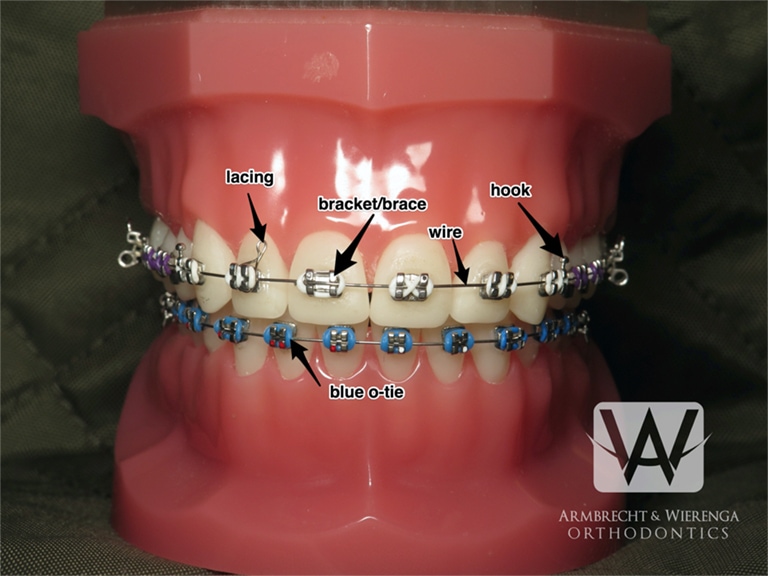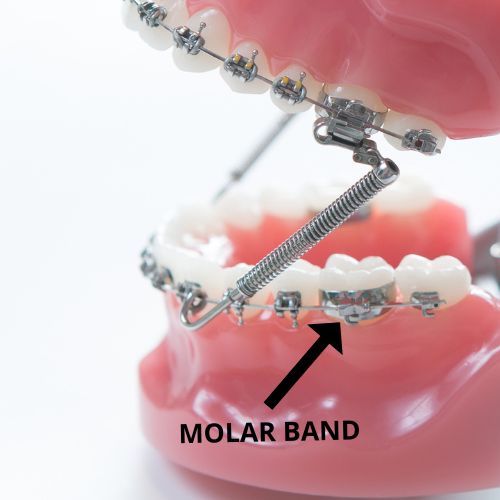A Closer Take A Look At Different Orthodontics Procedures and Their Advantages in Dental Treatment
Orthodontic treatments play a vital role in improving dental health and wellness and boosting the general aesthetic appeals of one's smile. From standard braces to contemporary clear aligners, the field of orthodontics supplies a range of treatment choices tailored to meet specific demands. Each approach includes its own collection of advantages, resolving various positioning problems and providing options that accommodate various choices and lifestyles. Understanding the subtleties of these treatments and their corresponding advantages can empower individuals to make enlightened choices about their oral wellness.

Typical Braces: Alignment Correction Method
Making use of the reliable approach of standard dental braces, orthodontic experts properly right misalignments of the teeth and jaw to bring back optimal oral health and feature. Typical dental braces contain steel braces that are stuck to the teeth and linked by wires and rubber bands. This system applies gentle pressure to gradually change the teeth into their appropriate placements over time.
One of the main benefits of typical braces is their flexibility in dealing with different oral concerns, including congested teeth, spaces, overbites, underbites, and crossbites. By attending to these misalignments, braces not only improve the aesthetic appearance of the smile however likewise boost overall oral health and wellness. Correctly straightened teeth are less complicated to cleanse, lowering the threat of tooth cavities, gum disease, and various other oral troubles.
While modern-day orthodontic innovations provide options like clear aligners, traditional dental braces continue to be a cost-efficient and trustworthy option for complicated positioning problems. Orthodontists carefully tailor therapy plans to match each individual's distinct needs, making certain reliable and successful end results in accomplishing a straighter, healthier smile.
Invisalign: Clear Aligners for Discreet Therapy
While standard dental braces have long been a best technique for correcting dental imbalances, Invisalign clear aligners offer a very discreet alternative for attaining straighter teeth and a healthier smile. Invisalign aligners are essentially unnoticeable, making them a preferred choice for people who choose a more cosmetically pleasing orthodontic treatment alternative.
These clear aligners are personalized to fit well over the teeth, slowly changing them into the preferred position. The treatment procedure involves using a collection of aligners that are changed about every two weeks to stay on top of the tooth motion.

Additionally, Invisalign aligners typically call for less sees to the orthodontist for adjustments, providing an easier treatment option for those with hectic timetables. Overall, Invisalign clear aligners offer a discreet, comfortable, and effective way to attain a straighter smile.
Lingual Braces: Hidden Behind the Teeth
Linguistic dental braces, positioned quietly behind the teeth, offer an alternative orthodontic therapy technique for individuals seeking a much less noticeable means to deal with oral imbalances. cumming invisalign. Unlike traditional dental braces that are positioned on the front of the teeth, linguistic dental braces are personalized to fit the back surfaces of the teeth, making them practically unnoticeable to others. This element makes linguistic braces particularly appealing to people that might really feel awkward regarding putting on visible braces yet still dream to accomplish a straighter smile
One of the main advantages of lingual dental braces is their concealed nature, allowing individuals to undertake orthodontic treatment without attracting attention to their oral adjustment process. In addition, lingual dental braces appropriate for check that remedying numerous dental concerns, including congestion, spacing issues, and attack misalignments. While they may take some time to get utilized to because of their positioning, linguistic dental braces can properly straighten out teeth and enhance on the whole oral health and wellness outcomes. Consulting with an orthodontist can assist establish if lingual braces are the right option for achieving preferred oral placement objectives.
Ceramic Dental Braces: Visual Remedy for Placement
Ceramic dental braces offer an aesthetically attractive orthodontic solution for accomplishing oral alignment with an emphasis on visual appeals. These braces are crafted from transparent or tooth-colored products, making them much less conspicuous contrasted to traditional steel dental braces. By assimilating with the all-natural color of your teeth, ceramic dental braces provide a much more subtle orthodontic therapy alternative. This visual allure is specifically eye-catching to individuals who may feel uneasy regarding wearing visible braces.
Along with their cosmetic advantages, ceramic dental braces function in a similar way to metal braces in lining up the teeth and fixing concerns such as overcrowding, gaps, and misalignment. They include braces stuck to the teeth, connected by wires that gently lead the teeth into the wanted placement with time. While ceramic dental braces are extra breakable than steel dental braces and may call for somewhat longer treatment times, several individuals find the trade-off beneficial for the improved look throughout the orthodontic procedure. In general, ceramic dental braces offer a very discreet yet effective way to attain a straighter, much more straightened smile.
Retainers: Maintenance of Therapy Results
Once braces are removed, the teeth have a tendency to change back to their original placement. Retainers play an important function in preventing this relapse by holding the teeth in their new positioning.

Normal follow-up appointments with the orthodontist are required to ensure the retainers fit correctly and are successfully maintaining the outcomes of the orthodontic treatment. By diligently putting on retainers as suggested, clients can take pleasure in her response a long-term, lovely smile and stay clear of the requirement for additional substantial orthodontic work.
Verdict
Standard dental braces give a reputable approach for fixing misalignments, while Invisalign offers a very discreet choice with clear aligners. Lingual braces are hidden behind the teeth for an extra inconspicuous therapy, and ceramic dental braces offer a visual choice for positioning adjustment.
Unlike conventional dental braces that are put on the front of the teeth, lingual braces are customized to fit the back surfaces of the teeth, making them practically unnoticeable to others. These dental braces are crafted from transparent or tooth-colored materials, making them much less conspicuous compared to traditional metal braces.In enhancement to their aesthetic benefits, ceramic dental braces function similarly to steel dental braces in straightening the teeth and correcting issues such as congestion, gaps, and misalignment. While ceramic braces are more vulnerable than steel dental braces and may need somewhat longer therapy times, several people discover the trade-off beneficial for the better appearance during the orthodontic procedure. Lingual braces are concealed behind the teeth for a more inconspicuous treatment, and ceramic braces learn the facts here now use a visual choice for alignment modification.